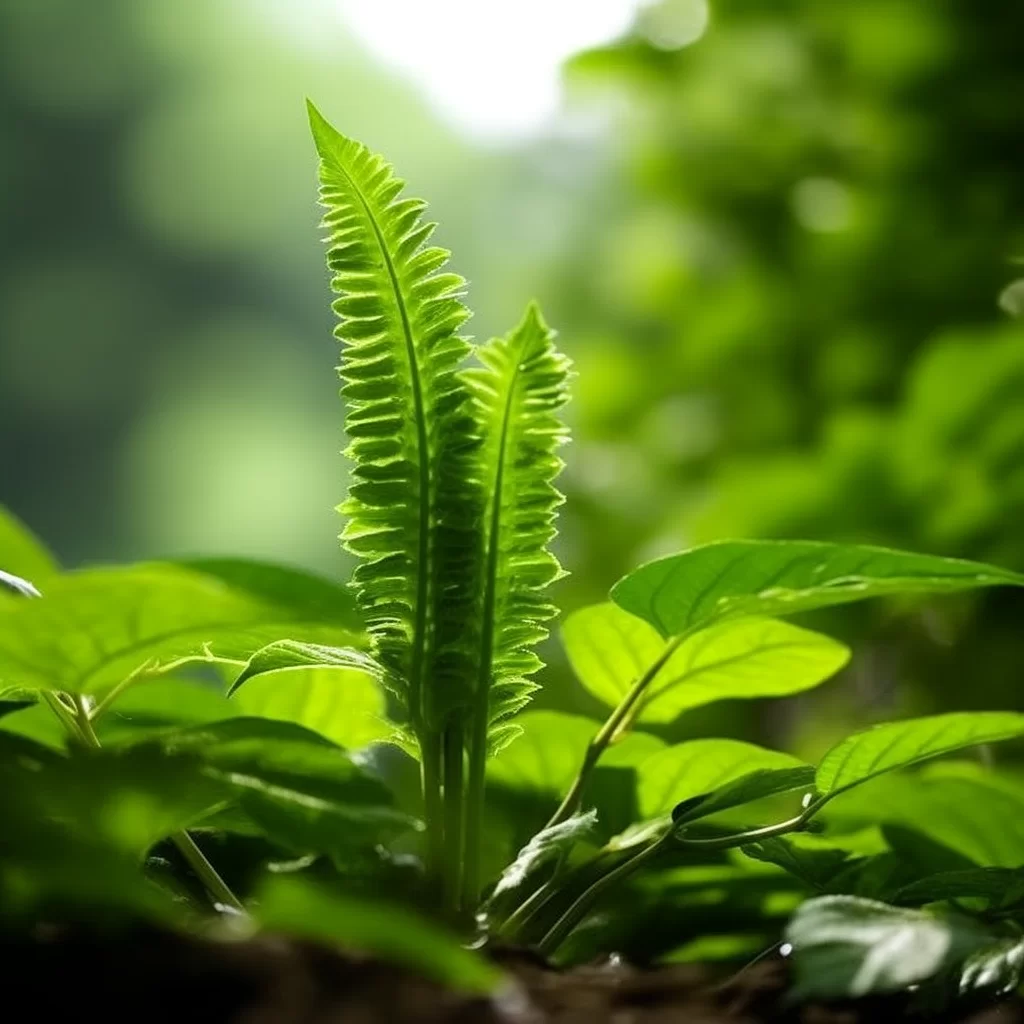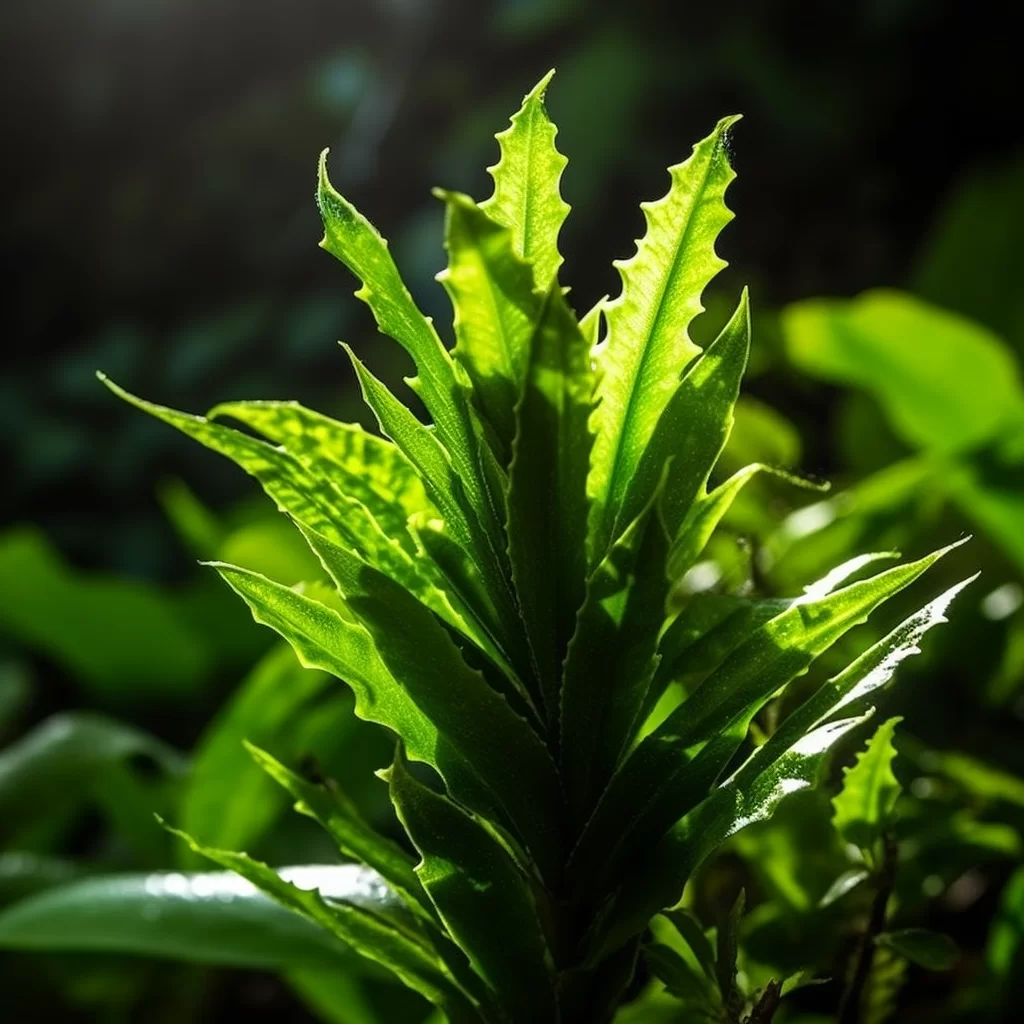Story of Day :
Contents
The Praying Plant: Complete Guide and Care Tips
Gardening is like a breath of fresh air, except you’re actually getting your hands dirty.
It’s a hobby that not only adds some natural beauty to your surroundings but also offers you a chance to unwind and find peace among the plants.
And let me tell you, if there’s one plant that will leave you feeling like Buddha himself, it’s the praying plant.
Also known as Maranta leuconeura (but let’s be honest, praying plant sounds way cooler), this bad boy has an incredible feature where its leaves fold up at night like they’re about to start reciting Hail Marys or something.
It’s like having a miniature congregation right in your own home! In this article we’ll help guide you through all the ins and outs of taking care of this holy houseplant so it can reach its full prayer potential and bring calmness to your daily routine.
Overview of Praying Plant
The praying plant is like a diva, but instead of demanding a certain temperature in the dressing room, it needs warm temperatures and high humidity levels to really thrive.
Hailing from Brazil’s tropical rainforests, this plant boasts broad, oval-shaped leaves with deep green borders that are as bold as Beyoncé’s stage outfits.
And let’s not forget those veined patterns that change from species to species – they’re like the unique style choices of Lady Gaga.
But what sets this plant apart from all the other green divas out there is its show-stopping move: when nightfall hits and the lights dim, it folds its leaves upward faster than Janet Jackson at a wardrobe malfunction.
Move over Britney Spears – there’s a new pop star in town, and it’s called the praying plant!
Light Requirements
- The praying plant requires bright indirect light but cannot tolerate direct sunlight.
- Avoid placing it near windows or under bright artificial lights that may scorch or bleach its delicate foliage.
- If you notice your prayer plants’ leaves turning yellowish-green or brownish-black spots on them instead of their usual green coloration; it could mean they are receiving too much light exposure.

Watering Needs
- Prayer plants prefer moist soil but not overly soggy conditions; hence it would be best if you watered it once or twice weekly during warmer months when soil dries out faster than winter months when growth slows down significantly due to lower temperatures.
- To ensure your plant gets enough humidity; you can place a tray filled with water under the pot to evaporate and create a moist environment for your plant.
Note: Overwatering can cause root rotting leading to wilting, yellowing of leaves
Let’s talk dirt, baby! When it comes to growing plants, soil is kind of a big deal.
Like, it’s the Beyoncé of the gardening world – always in the spotlight and absolutely essential to success.
But not just any old dirt will do.
No way, Jose! Plants have standards (they’re high maintenance like that) and they require specific soil requirements in order to thrive.
So what are these diva-esque demands? Well, for starters, plants need soil that’s rich in nutrients – none of this cheap fast food crap – we’re talking about organic gourmet-level stuff here.
And don’t even think about skimping on drainage – no plant wants soggy socks for roots (gross!).
Good drainage means plenty of oxygen flow and happy roots all around.
Oh, and let’s not forget about pH levels! Plants can be real drama queens when it comes to acidity levels in their soil (like seriously high-maintenance).
Some prefer acidic soils while others thrive in alkaline environments..xjust like how some people prefer coffee with cream while others take theirs black as night (weirdos).
So there you have it folks – the dirt on soil requirements..xand yes, pun totally intended 😉
Oh, the praying plant! This little guy is a diva when it comes to soil.
It wants something that screams “I’m fancy and expensive!” A well-draining, nutrient-rich mix is like its natural habitat.
So, if you want to keep your praying plant happy (and trust us, you do), try using a fancy peat moss-based mixture or adding some coconut coir and perlite for extra drainage and moisture control.
Think of it as rolling out the red carpet for your green friend!
Let’s talk about everyone’s favorite topic – fertilizing needs! We all know that plants need their nutrients like humans need their morning coffee.
But have you ever stopped to think about what a plant really wants in its fertilizer? Sure, nitrogen is great and all, but what about a little bit of love? Maybe some encouraging words whispered into the soil every once in a while.
And why stop there? How about playing some smooth jazz for your houseplants or even throwing them a mini dance party to boost their mood and growth potential? Who knows, maybe your tomato plant will start busting out some sick moves on the vine.
So next time you’re out shopping for fertilizer, don’t forget to grab some extra love and positive vibes to sprinkle on top.
Your plants will thank you with bountiful harvests and maybe even a green thumb high-five (if you’re lucky).
Alrighty, folks! Let’s talk about fertilizing our beloved praying plants.
These babies need some grubbin’ every two weeks during the Spring-Summer season with a balanced liquid houseplant fertilizer.
Don’t go crazy though, moderation is key – we don’t want these guys getting an upset tummy from overfeeding.
And let’s be honest, who wants a hangry praying plant? Not I! Now if you’re thinking about slapping some fertilizer on during winter when it’s colder than Frosty the Snowman’s boogers, hold your horses! Growth slows down in the winter due to the frigid temps, so there’s no need to stuff their faces during this time.
Plus, can you blame them for being sluggish when it feels like they’re living in a frozen tundra? So remember folks, feed your praying plants with care and love – just like how your grandma feeds her grandkids cookies (in moderation of course).

Common Issues with Praying Plants & How to Fix Them
1.
Bacterial and Fungal Leaf Spots: Yellowish-green spots on the leaves indicate fungal or bacterial infections.
To fix this issue:
- You will have first to remove any infected parts or leaves using sterile scissors or pruning shears.
- Spray fungicide solution on the remaining foliage after cleaning up affected areas thoroughly before discarding them into trash bags but not compost bins as that would spread further disease around landscape beds over time.

Note:
- If left untreated; this disease may cause severe damage resulting in stunted growth, wilting and possible death of the plant.
2.
Brown Leaf Tips: Dry brown tips on foliage indicate low humidity levels; to fix this issue:
- You can place a humidifier near your plant or mist the leaves using distilled water to increase moisture content around its environment.
Note:
- You should avoid using tap water as it contains minerals and chemicals that may harm your plant’s delicate leaves over time.
Conclusion

So, you want to add a touch of holiness to your humble abode? Well, why not grow a praying plant! Not only will it bring character and beauty to your indoor garden or home office space but with the right tender loving care, you can enjoy its delightful features all year round.
To keep this little guy happy and healthy, make sure it gets plenty of sunlight, moist well-draining soil with an extra kick of nutrients from fertilizers.
But don’t go overboard on the watering levels – moderation is key here! Keep in mind that these plants thrive in high humidity environments so maybe invest in a humidifier or just place a bowl of water nearby.
And whatever you do – keep an eye out for any pesky bacterial/fungal leaf spots or dry brown leaf tips which could really put a damper on things if left unaddressed.
So be vigilant my plant-loving friends! By staying on top of these common issues before they escalate into severe problems that could cause permanent damage or even death.. you’ll be rewarded with a healthy and thriving praying plant that’s sure to impress all who lay eyes upon it!